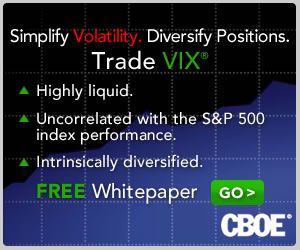The Risk Library
 Two weeks ago I offered up “Ten Anecdotal/Historical Book Ideas for Investors” on the premise that humans have a tendency to learn and retain more valuable concepts when the learning process is enjoyable.
Two weeks ago I offered up “Ten Anecdotal/Historical Book Ideas for Investors” on the premise that humans have a tendency to learn and retain more valuable concepts when the learning process is enjoyable.
This list is quite different. Risk is something that the novice trader/investor invariably fails to think about enough and properly address in their trading methodology. Interestingly, risk management is often the Achilles heel of more experienced traders who know better, but also fail to attend to with sufficient rigor.
With this in mind, I offer up some favorites from my personal library to help all traders think about risk and act to limit the risks inherent in their trading strategies, ordered roughly from the most abstract to the most prescriptive, which I often find is an excellent way to tackle any unfamiliar subject:
Against the Gods (Peter Bernstein) – A high level survey of the history of risk from the perspective of the advance of civilization. A relatively quick read that should inspire the desire to take a closer look at risk vis-à-vis investments.
The (Mis)Behavior of Markets (Benoit Mandelbrot) – A fun and mind-expanding stew of financial risk, fractals and chaos theory. A great thought starter and surprisingly easy for non-math/physics scholars to breeze through.
Fooled By Randomness (Nassim Taleb) and The Black Swan (Nassim Taleb) – I suggest you try these in chronological order, starting with Fooled By Randomness. If Bernstein and Mandelbrot offer up two solid thought starters, then Taleb is a master of throwing gasoline on the fire. Deftly written in his own idiosyncratic narrative, Taleb’s books are bursting at the seams with ideas and ground zero is risk.
Choices, Values, and Frames (Daniel Kahneman and Amos Tversky) – Behavioral finance is a subject that is still gaining traction, but the sooner you steep your thinking in the ideas of the discipline’s founding fathers, Kahneman and Tversky, the better off you will be. This particular book is a collection of essays that you can read through at your own pace.
Manias, Panics, and Crashes (Charles Kindelberger) and/or Devil Take the Hindmost (Edward Chancellor) – Kindleberger offers a dense but informative history, while Chancellor wins out in terms of readability. Each is an excellent account of the history of speculation and market excesses; picking one of the two would probably suffice. Note that Charles MacKay’s Extraordinary Popular Delusions and the Madness of Crowds should also probably be on this historical menu, but I have not yet read it.
With Fortune’s Formula (William Poundstone), this list passes over from the largely theoretical into the prescriptive realm. This is a fun read on the Kelly criterion, set to a backdrop of blackjack and casino gambling.
A Thousand Barrels a Second (Peter Tertzakian) and/or The Oil Factor (Stephen Leeb) – There are many books out there that discuss the merits of Peak Oil. I have only read a few of them, but Tertzakian’s treatment is by far my favorite and certainly one of the more objective ones. Leeb’s book probably created a larger stir (as did his The Coming Economic Collapse, which strikes me as little more than a hastily assembled slight update of his previous book), but it covers most of the important points in much smaller bites. Every investor, Peak Oil proponent or otherwise, needs to take a close look at this subject and be prepared for how a number of oil-related scenarios may play out over the remainder of their investment time horizon.
Financial Shenanigans (Howard Schilit) – The subtitle of the book, How to Detect Accounting Gimmicks & Fraud in Financial Reports is exactly what this book is all about. Here is a fundamental approach that addresses what to look for, with an excellent treatment by Schilit. It is up to the reader to determine whether these companies should merely be avoided or whether they might also be short candidates.
How to Make Money Selling Stocks Short (William O’Neil and Gil Morales) – This is another prescriptive book and it relies entirely on a couple of basic technical analysis concepts. Even with that shortcoming, I think the true value of the book is that it will help you to actively look for short opportunities and avoid the confirmation bias that long-only approaches can sometimes succumb to. For example, if stock chart is screaming “buy” at you, would it be a “sell” if you turned the chart upside down?
When to Sell (Justin Mamis) and/or It’s When You Sell that Counts (Donald Cassidy) – While it is easy to find books on how to buy stocks, good luck finding an entire book devoted to the topic of selling them. Mamis and Cassidy are the only two books of this kind I have encountered and fortunately each offers an excellent treatment of the subject. I am slightly partial to Mamis here, but since most of us make or lose a lot more money managing existing positions than seeking better entries, my suggestion is to try both of them.
Trading Risk (Kenneth Grant) – This book is the only one I know of that offers highly detailed advice about how to evaluate the various types of risk in your holdings and take action to mitigate those risks. If I could, I would make it required reading for any newcomer to the investment world.


17 comments:
A truly excellent list of books... I have read about half of them. Regarding Fortune's Formula, I wrote a piece applying the Kelly Criterion to the purchase of stocks. If you're interested, I could post the link.
Thanks, David. Feel free to post a link to the article you wrote -- and thanks for asking.
Cheers,
-Bill
A very useful list with brief reviews. I was still scratching my head on which books to pick up first until I saw your list! Thanks!
A reader who has already read Taleb, Mandelbrot and O'Neil/Morales asked me for my top three recommendations from my list. Here is what I said:
For the newbie investor, my thinking is that I'd want something that would put a little scare into them and force them to think about risk to the point that they conclude they cannot ignore it. I'd also like to recommend something that is readable so they don't just put down the first book and conclude "I'll worry about that later..." So I'd probably recommend something like:
1. Fooled by Randomness
2. The Oil Factor
3. Trading Risk
For a more experienced investor who has a better experiential framework for thinking in depth about this stuff for the first time (and particularly for someone who has already read Mandelbrot, Taleb and O'Neil/Morales) I'd probably go with something like:
1. When to Sell
2. Choices Values and Frames
3. Trading Risk
The Schilit book should also be on the short list for any investor who is fundamentally-oriented, IMHO.
If you just want to think about this stuff, start from the top of the list; if you want to implement something this week, start from the bottom of the list.
FWIW, the authors/books that have probably had the largest impact on my thinking are:
1. Taleb -- I can never seem to get his ideas out of my head, which I consider a good thing
2. Kahneman/Tversky -- in the event you missed an excellent post by Barry Ritholtz on cognitive biases, the first time I stumbled over behavioral finance it was a revelation that set off a chain reaction of ideas that continue to hover over every trade I make
3. probably a tossup between Tertzakian and Mamis (the less you know about oil/energy, the more you should probably favor Tertzakian)
Here's the link. It was a fun article to write.
buy propecia propecia side effects uk - much does propecia cost new zealand
In this hectic life, we have no time to take care of ourselves, hence massage is needed for rejuvenation and stress reduction
bella provide skilled massage therapists will ease your tensions and melt away your stress
Great post
Useful and valuable post
Mind relaxation and rejuvenation is necessary in today's busy world
aweome article
exciting post
extremely great post
impressive one
awesome
great one
b2 massage nearby me
Post a Comment